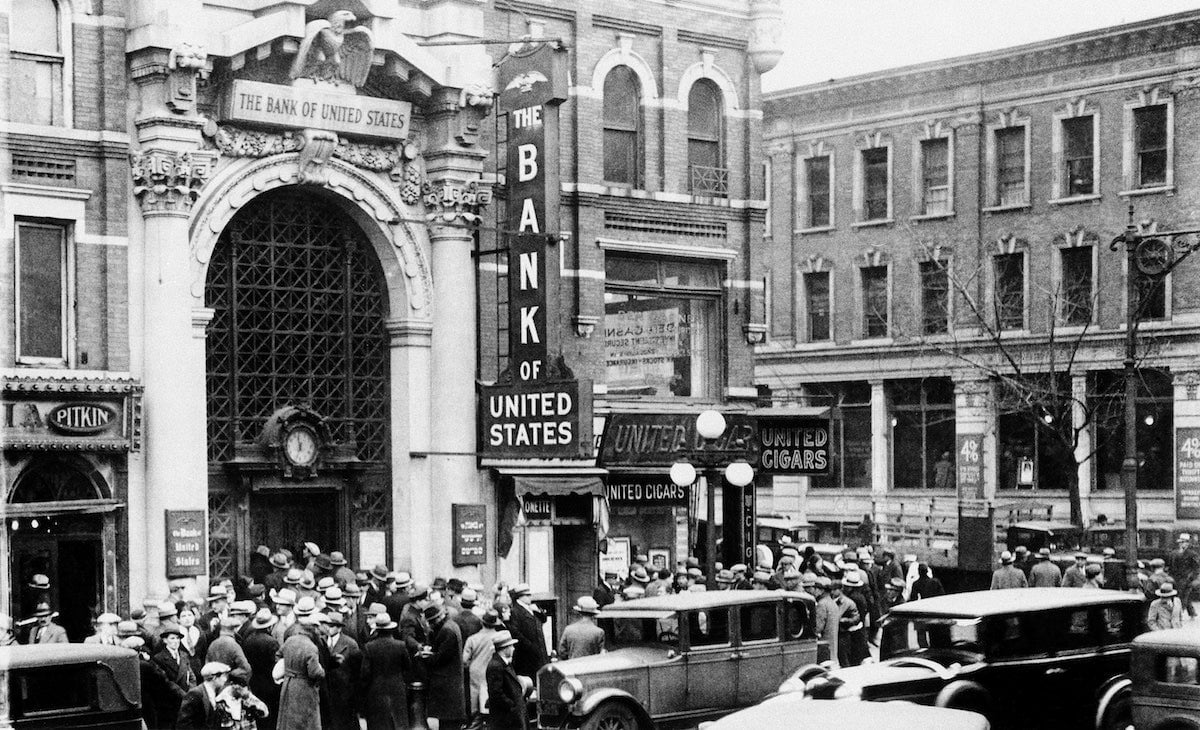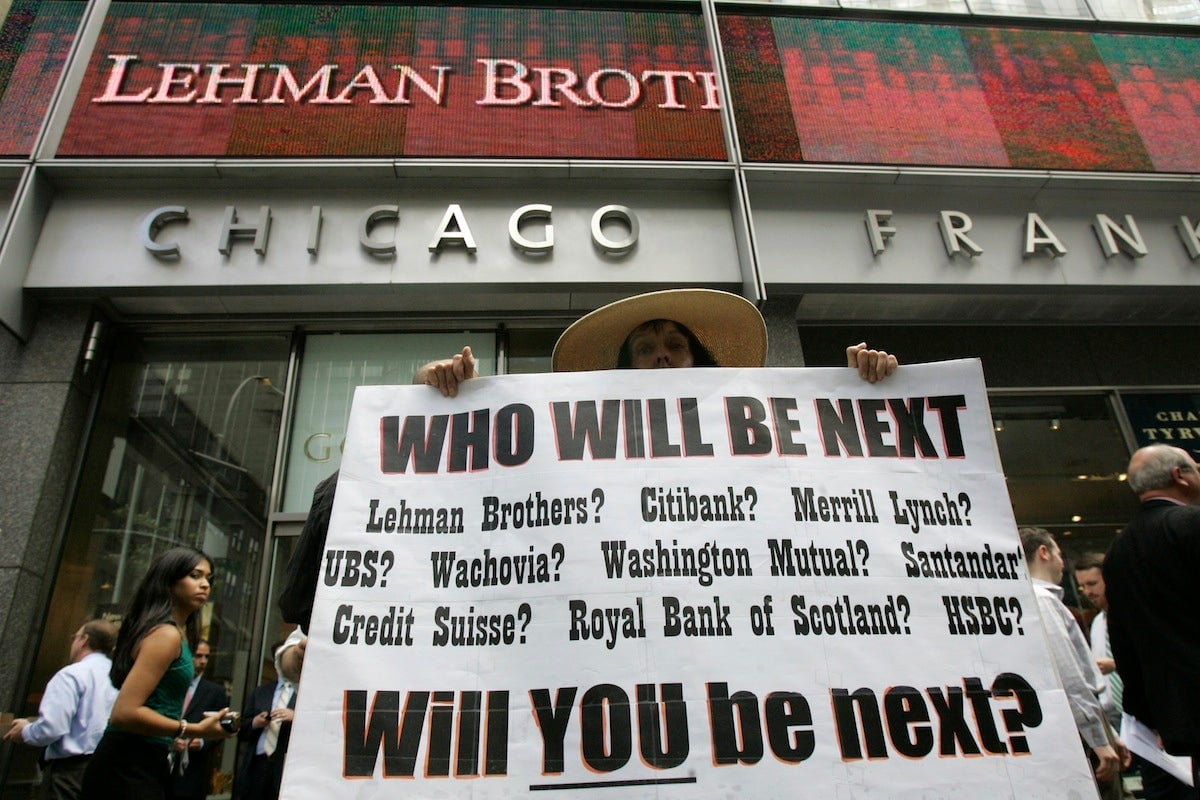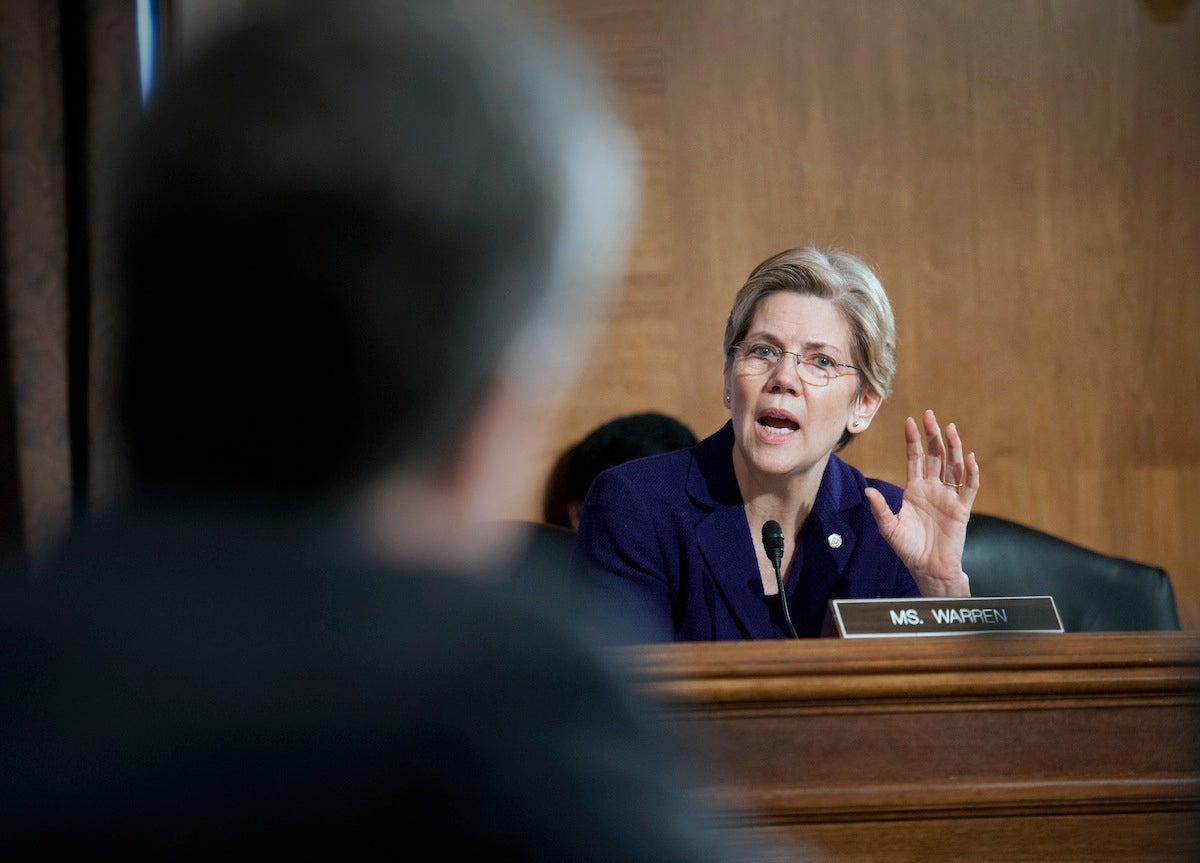The huge misconception at the heart of “too big to fail”
As banks continue to swell in size, the public might conclude that legislators have gone back on their promise to never again let a bank grow “too big to fail.” But making banks smaller was never what legislators—most of them, anyway—had in mind.


As banks continue to swell in size, the public might conclude that legislators have gone back on their promise to never again let a bank grow “too big to fail.” But making banks smaller was never what legislators—most of them, anyway—had in mind.
American banks? Those things that were nearly wiped out during the financial crisis? They’re doing just fine, thank you. In the first quarter of 2013, they posted their highest profits ever—a total of $40.3 billion, the Federal Deposit Insurance Corporation (FDIC) announced yesterday.
With unemployment still so high, the banks’ success is hard for the public to swallow. Some are now larger than they were before the financial crisis. Critics allege that the US Treasury, the Federal Reserve, and other regulators have done nothing to prevent banks from growing “too big to fail,” the presumed problem at the heart of the crisis. In fact, people like Elizabeth Warren, the US senator and crusader for banking reform, have argued that large Wall Street banks even enjoy a “subsidy” over smaller ones—some $83 billion—since they benefit from an implicit promise that, should they fail, the government will bail them out.
And yet, regulators and policymakers who supported the Dodd-Frank Wall Street Reform and Consumer Protection Act (pdf), the law designed to fix the causes of the crisis, argue vehemently that it has ended ”too big to fail”, or is well on the way to doing so. So how can they make such a claim?
Because it’s a misconception that regulators ever had the explicit goal of making massive, complex financial institutions smaller. The focus was never on the “big” part; it was on the “fail” part. Dodd-Frank—introduced in late 2009 and passed in 2010–was meant to create a path that would allow banks and other “systematically important” financial institutions of any size to fail—i.e., cease to exist in name—without causing permanent damage to the US financial system. And in fact, these very policies are most cumbersome for the very smallest banks, and encourage them to get bigger.

The birth of TBTF
The real seeds of “too big to fail” were planted in the previous mega-crisis—the Great Depression. The FDIC was created as part of the Banking Act of 1933 to prevent runs on vulnerable banks. It now protects the first $250,000 in every deposit account at the FDIC’s member banks (which number around 7,000). This had an immediate stabilizing effect. So long as depositors knew their money was safe even if the bank failed, then they wouldn’t rush to withdraw their funds at the first whiff of trouble.
But at the same time, deposit insurance was the first in a long line of policies that made the government progressively more liable for financial institutions’ losses.
First, the insurance slowly expanded to cover virtually 100% of deposits held at the nation’s biggest banks—not just those initially insured by the FDIC. Realizing that this heaped a lot of the burden for a crisis on the public purse, policymakers in 1991 passed the Federal Deposit Insurance Corp. Improvement Act (FDICIA). That bill made a bank’s uninsured depositors and creditors more likely to take losses if it defaulted. But it also created an important loophole: if regulators believed that an institution’s failure would damage the greater financial system and economy, they could bail it out.
With hindsight, of course, this seems crazy: a classic setup for “moral hazard.” Yet policymakers at the time believed they were making banks safer—in fact, infallible. The reasoning went like this: If the government promised never to let a big bank fail, then investors and depositors would never fear that it would fail, they would never make a run on its assets, and it would never need a bailout.
Policymakers evidently never imagined that the promise of a bailout would tempt megabanks into taking outsized risks. It was as if a ship’s captain were to decide that caulking a ship to make it watertight empowered him to sail it into a Category 5 hurricane. In fact, that’s exactly what the banks’ captains decided.

Crisis measures: Dodd-Frank and Basel III
The Obama administration rushed into Washington, DC, in 2009 in a mad dash to plug the financial system’s holes and batten down the hatches. When Lehman Brothers had collapsed in the previous September, shortly before Barack Obama’s election, neither the government nor the financial sector had stood behind it, thereby undermining the promise made by the FDICIA. The bank’s failure taught the incoming government a lesson: Financial instruments tied to Lehman were suddenly of questionable value, and the bank’s employees and units were left in limbo. Its disorderly failure set off a global financial crisis, and it was clear that the same thing could not be allowed to happen again. Policymakers needed a new system.
Luckily, they had lots of material from which to draw ideas. Since the failure of Continental Illinois in 1984—nationalized to prevent the failure of national money markets—economists had criticized laws, like the FDICIA, that almost explicitly allowed big banks to rely on the good graces of the taxpayer. Their criticism, though, was mainly against the principle of shielding banks from the discipline of the markets. The size of those banks was a secondary issue.
The proposed fixes were always pretty much the same: Create a system in which even the largest banks can fail and won’t need a taxpayer bailout. For this to happen, banks had to have more cash on hand (capital). With more cash, economists figured, they would be better prepared to absorb losses from a bad bet.
Now, it’s true that increasing the amount of capital banks must hold will tend to make banks—and the banking industry as a whole—smaller. That’s because holding capital is expensive. If you’re forced to keep a certain percentage of your money in a savings account, you can’t invest it all. This, regulators felt, would encourage banks to get rid of some of their less profitable businesses, because the profits didn’t outweigh the costs.
However, this was seen as a side-effect of such policy, rather than the goal. As John H. Boyd and Arthur J. Rolnick wrote in the Minneapolis Fed’s 1988 annual report:
To the extent that bank owners are risk-averse and cannot completely diversify their investments, more capital helps to offset the incentive to risk taking because owners have more at stake. The second effect is less direct and considerably more subtle. Other things equal, a higher capital requirement will reduce the expected losses of the FDIC, effectively reducing the net subsidy to banking due to deposit insurance. Reducing this subsidy will cause some shrinkage of the banking industry—either as banks cut back on marginally profitable lending or as marginally profitable banks are driven out of business.
Minneapolis Fed researchers would continue to harp on the issue over the next two decades, to the yawns of other economists. They argued that the US government had to say explicitly that uninsured depositors would take losses if a bank failed. They argued that banks needed more capital. And they argued that some of banks’ debt had to be issued for longer periods than it was (investment banks have traditionally funded themselves by issuing very short-term debt), so that banks’ assets wouldn’t suddenly disappear if their counterparties got nervous and refused to continue financing the bank.
And these provisions were at the heart of Dodd-Frank: Be explicit about how the government will manage a bank bankruptcy; create a “resolution authority” that can sustain and manage a failing bank’s liquidation; and force banks to prepare for it by reorganizing their funding and capital structure.
Dodd-Frank, like the Basel III international financial accords also passed in 2010, espouses a simple purpose: Banks, no matter their size, should be able to fail. Dodd-Frank’s Title II spells out how a massive bank can be wound down under FDIC supervision. Shareholders, creditors, and unsecured depositors take losses in order to keep the untainted pieces functioning. ”Breaking up” banks is a last resort, to be taken only upon liquidation or some impossibly severe threat to the system. Dodd-Frank spells out steps banks must take to prepare for that, like writing living wills, issuing long-term debt, and holding on to capital. The idea is to prevent a disorderly Lehman-style failure—to keep a bank functioning on life-support as its various organs are calmly removed and sold or carefully liquidated.
Dodd-Frank is still far from full implementation. Of the 398 rules regulators were supposed to come up with, they’ve finalized only 153 (pdf). Another 116 rules have been proposed but are still coming down the pipeline, and regulators have yet to propose 129 regulations that would actually put all of Dodd-Frank into place. Basel III, too, is still a faraway dream: The accords will one day force banks to hold capital equal to 7% of their risk-weighted assets, but continuing weakness in the European banking sector and different standards for how to measure the risk of assets have delayed regulators in implementing even the first stage of the agreement.

The infamous “subsidy”
Criticisms of Dodd-Frank come from both small banks and big ones. For the small banks, for instance, regulations require extra paperwork that imposes oppressive legal costs. Mergers have helped these banks save money, but it’s also meant that they’ve gotten larger.
Small banks’ key objection, however, is the $83 billion “subsidy” big banks supposedly get in funding markets. This subsidy comes about, ostensibly, because the assumption that the banks will get a taxpayer bailout if they fail lowers their borrowing costs by an average of 0.8%. Multiplied by their total liabilities, that adds up to $83 billion.
Dodd-Frank is based on research that sought to eradicate this funding advantage. It’s not clear that it has done so; both the analysis that produced that $83 billion figure and the banking industry’s response are based on data collected before economic reforms were enacted.
But even after the rules have changed to let big banks fail, investors may not truly believe that the government will let it happen, until it actually does. ”A surprising amount of progress has been made, though nobody in the markets believes it…in this [too-big-to-fail] case, Dodd-Frank is ahead of the curve,” former Fed Chairman Paul Volcker said at a conference recently. He suggested that the success of Dodd-Frank can only be really measured once a big bank fails. ”If the resolution authority was a complete success, we’d never have to use it!”
And even if investors believe big banks will truly be allowed to fail, big banks will probably still get a better deal in the funding markets than smaller ones. Big multinational banks are more diversified than small community banks by nature. A community bank takes a sharp and direct hit when a local manufacturer decides to move overseas; people lose their jobs and default on their mortgages, property values dip, and the local bank gets stuck holding the bill. By contrast, while a local branch of JP Morgan Chase may report poor numbers, JP Morgan Chase as a company will probably be unaffected. So it’s no surprise that big banks can borrow at cheaper rates than small ones; big ones are by nature better at weathering all but the largest economic shocks.
Meanwhile, the big banks too have objections to Dodd-Frank. Both Dodd-Frank and Basel III rely heavily on the idea that holding more capital will help banks stomach losses and prevent a failure in the first place. But as we’ve already said, holding capital is costly and could force banks to drop certain kinds of business. A Deutsche Bank report says that new regulations could make numerous big banks leave full-service fixed income, and currency and commodities sales and trading. JP Morgan analysts wrote last month that large multinational investment banks will be “un-investable,” because new rules will take such a toll on their profitability. So far, the country’s biggest seven banks haven’t gotten smaller since Dodd-Frank went into effect, but they’re not growing rapidly.
More to fix?
As we’ve said, Dodd-Frank is all about the “fail” part of too-big-to-fail. And yet, the idea of breaking up big banks is not quite dead in Washington. In April, Senators Sherrod Brown and David Vitter introduced a bill that would encourage the biggest banks to break up. It does it by imposing extra capital requirements on banks that are larger than $500 billion in assets.
But the Brown-Vitter bill is unlikely to fly. Any politicians who might want to back it are caught between a rock and a hard place. If they are honest about its goals—and anyone who follows financial services knows that the proposal essentially strong-arms big banks into cutting themselves down (pdf)—they risk losing Wall Street donations and incurring the wrath of lobbyists. So they have been forced to argue that it wouldn’t explicitly break up big banks—and that means they can’t generate popular support for it. Besides, the bill would effectively take the US out of the international Basel III accord, and thus destroy cooperation between international regulators.
There are many other criticisms of Dodd-Frank. Banks still aren’t holding enough capital, or the right kind of capital, to protect themselves from destabilizing losses. Market discipline cannot function in a market where we know so little about how exposed banks are. Regulators don’t know how to spot systemic risk before it becomes a problem. Regulators won’t be able to follow the road map they’ve laid out. Banks don’t fund themselves in a healthy manner, and can still fail if that funding dries up suddenly.
But none of the answers to these problems has to do with size per se. Two of too-big-to-fail’s most vehement critics since the early 2000s, Gary Stern and Ron Feldman of the Minneapolis Fed, wrote in 2009 (pdf), “If we exclusively embrace a reform that misleadingly promises victory over TBTF by constraining the size of large financial firms, we may squander the time and resources needed to address the problem at its roots.” Dodd-Frank is the fruit of that decision.